-
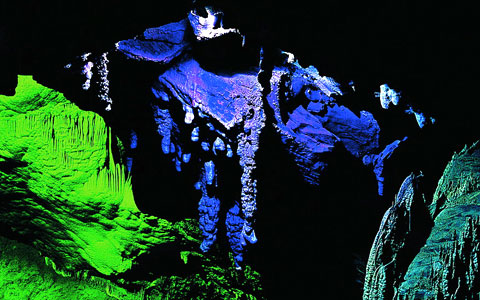
Located in Qiliangqiao Town five kilometers north of Fenghuang(Phoenix) Ancient City, the Qiliang Cave is a typical carbonate grotto characterized by grotesqueness, elegance, broadness and serenity. With a length of over 6,000 meters, it is divided into five sections, i.e. the ancient Battlefield, Gallery, Paradise, the Dragon Palace and the Yin-yang River. Visitors can appreciate the scenery along a river by boat.Transport: A shuttle bus goes there from Fenghuang Ancient City.Tel: (86)743-3570001.Admission (for reference): RMB60 yuan/adult:Opening hours: 08:00 -18:00
Xiangxi & Fenghuang & Huaihua
2012-08-06 16:31
View:3519
-
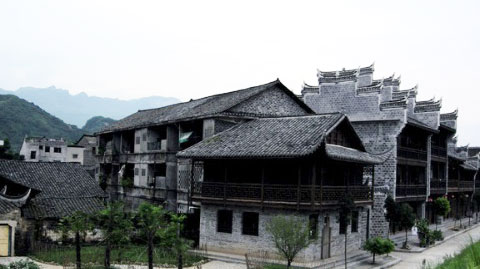
Liye Ancient town is a national scenic area and a state-list famous historic and cultural town. The Tujia people have lived here for thousands of years. In 2002, the town became renowned overnight because of marvelous discoveries which include historic sites such as the ancient city moat, city wall, workshops and wells. Its long history is testified by the unearthed artifacts of bronze, pottery, jade and weaponry. The 36,000 bamboo slips inscribed with scripts from the Qin Dynasty (221BC-207BC) unearthed in the city are of great significance for the study of the history of that period.
Xiangxi & Fenghuang & Huaihua
2012-08-06 16:29
View:3116
-

Biancheng Town in HuaYuan County, popularly known as \"Frontier City\", is located at the junction of three provinces of Hunan, Sichuan and Guizhou. It is one of the four famous towns in Xiangxi. Tourists can admire the reflection of bridges and towers in the calm river water and bamboo houses propped up with supports in distance. The place is as tranquil and beautiful as paradise.Admission (for reference): RMB52 yuan /adult
Xiangxi & Fenghuang & Huaihua
2012-08-06 16:28
View:3032
-
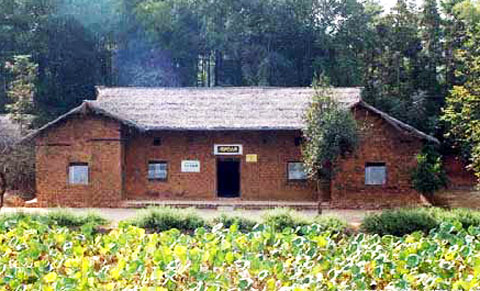
The Former Residence and Memorial Hall of Qi Baishi, a famous master of traditonal Chinese painting, is situated in Baishipu, Xiangtan County. The house consists of earthen walls and a thatched roof. In the memorial hall, the paintings, wooden carvings, seals, poems and artides (articles) by Qi Baishi are on display in addition to his stationeries and utilities for daily use.Transport : Bus No.3 from Xiangtan to Former Residence of Qi BaishiTel :(86)732-58257853 (Memorial Hall)Opening hours:8:30 -17:00 h5{ color:#000; font-size:12px; font-weight:bold; margin:15px 0 0 0}.relnews a{ padding:8px 0 3px 0; line-height:22px; border-bottom:dashed #069 1px; display:block;}
Changsha & Zhuzhou & Xiangtan
2012-08-06 16:16
View:3660
-
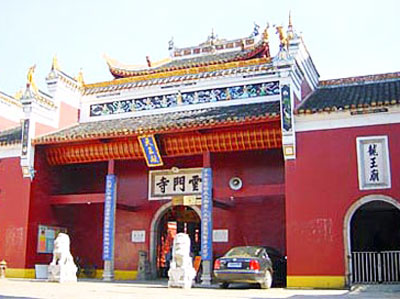
Situated in Xiangxiang City, the Yunmen Temple was first constructed in the second year (1050) of the Huangyou reign of the Song Dynasty. Now it is mainly composed of the Front Hall, the Shrine of Sakyamuni Buddha and Avalokitesvara Pavilion, which holds a statue of Avalokitesvara with 1,000 eyes and 1,000 arms, showing high workmanship.
Changsha & Zhuzhou & Xiangtan
2012-08-06 16:06
View:3668
-
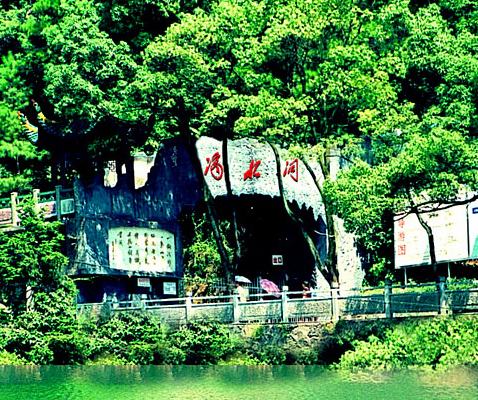
Dishui Cave named as \"Western Cave\" by Mao Zedong, which is famous due to Mao Zedong\'s legendary life and stories, is located 4 kilometers to Mao Zedong Bronze Statue in the gorge. The construction of Dishui Cave Villa begins in 1960, and the pattern of the house is similar to the structure of houses in Zhongnanhai. Mao Zedong spent eleven days here during the time he returned to Shaoshan in June, 1966. Now it is key national scenic and historic spot. The scenic area is surrounded by waters, with rolling peaks in addition to some natural scenic spots, such as \"Goddess of Mercy Carrying a Child in Her Arms\", \"Eight Immortals Playing Xiao (the vertical bamboo flutes)\" and \"Dragon Spring\".Admission(for reference): RMB 50 yuan /adult
Changsha & Zhuzhou & Xiangtan
2012-08-06 16:04
View:3712
-
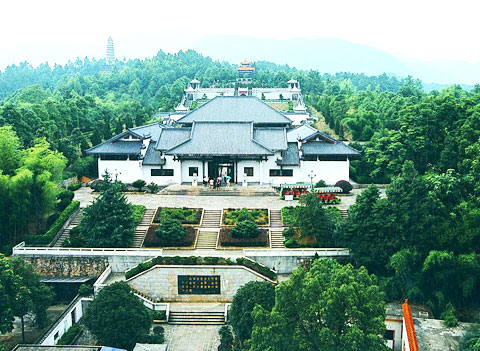
The Mao Ancestral Hall which was the main ancestral hall of the Mao clan in Shaoshan, was built from 1758 to 1763. The building is in the structure of brick and wood, with green brick and tile, covering the total area of nearly 700 square meters.In the autumn of 1921, the advanced intellectuals in Shaoshanchong, Maoluzhong, Maojianchen set up a school of the Mao clan. In order to launch the peasant movement in Shaoshan, between the early spring and mid autumn in 1925, Mao Zedong and his wife Yang Kaihui came back to Shaoshan, and made use of clan school to start Peasant\'s Night School which was the earlisest peasant\'s night school in Shaoshan.During the War of Resistance Against Japan (1937-1945), the Chinese Communist Party Branch launched a library and the site of CPC in Shaoshan, Xiangtan County District,Qugongsuo(District Public Office) and Cultural Centers in Shaoshan District during the initial post-liberation period.The related local authorities made a great maintenance in order to keep its original appearance in 1920th and opened to the outside. At the beginning of 1980th, it was approved to be historical and cultural relics unit under protection by People\'s Government.
Changsha & Zhuzhou & Xiangtan
2012-08-06 16:00
View:3563
-
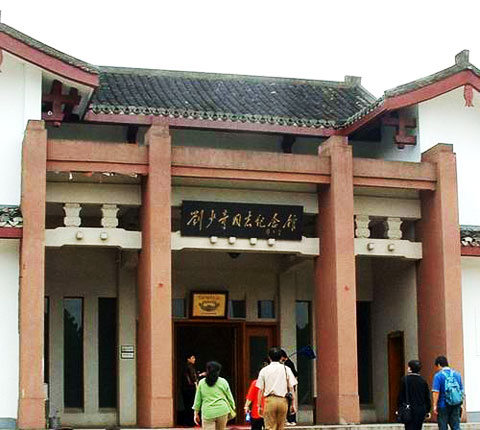
Liu Shaoqi is a revolutionary, statesman, and theorist. He was Chairman of the People\'s Republic of China, China\'s head of state, from April, 1959 to October, 1968, during which he led economic construction and policy initiatives of the country. He was purged during the Cultural Revolution(1966-1976) and died under suspicious circumstances and harsh treatment in late 1969, but his reputation was posthumously rehabilitated in 1980 by most of Chinese government and Chinese People.Situated in Huaminglou town, Ningxiang County, Changsha, Liu Shaoqi Memorial Hall is the only biographical memorial hall in China that systematically introduces Liu Shaoqi\'s life and great deeds. As a key historical monument under state-level protection, Liu Shaoqi Memorial Hall mainly includes the former residence, and the copper statue.The Former Residence of Liu Shaoqi has 20 rooms of various sizes with more than 30 thatched cottages and tile-roofed houses restored according to the original designs. Over 190 exhibits are on display; the typical features of a farmer\'s house at the end of the 19th century, and some scenes of Liu Shaoqi\'s life in the old residence are represented.The Memorial Hall, located some 300 meters from the residence, was constructed in November, 1988. Rich historical documents and materials and photos are stored in the Memorial Hall.In the square in front of the hall, a bronze full-length statue of Liu Shaoqi has been erected with a height of 7.1 meters. Completed on November 24th, 1988, the bronze statue was carefully sculptured by the famous sculptors Liu Kaiqu and Cheng Yunxian. In 1998, General Secretary of CPC and President Jiang Zeming inscribed for the bronze statue. Liu Shaoqi Memorial Hall has gained the honor of \"the first batch national patriotic education bases\" and \"one of Ten Chinese classics red scenic spots\", etc.Transport: Long-distance buses go regularly from Changsha West Bus Station to Huaminglou town every dayTel: (86)731-87094027Admission (for reference): RMB 50 yuan/adultSource: Hunan Official Web Portal�
Changsha & Zhuzhou & Xiangtan
2012-08-06 11:30
View:3594












